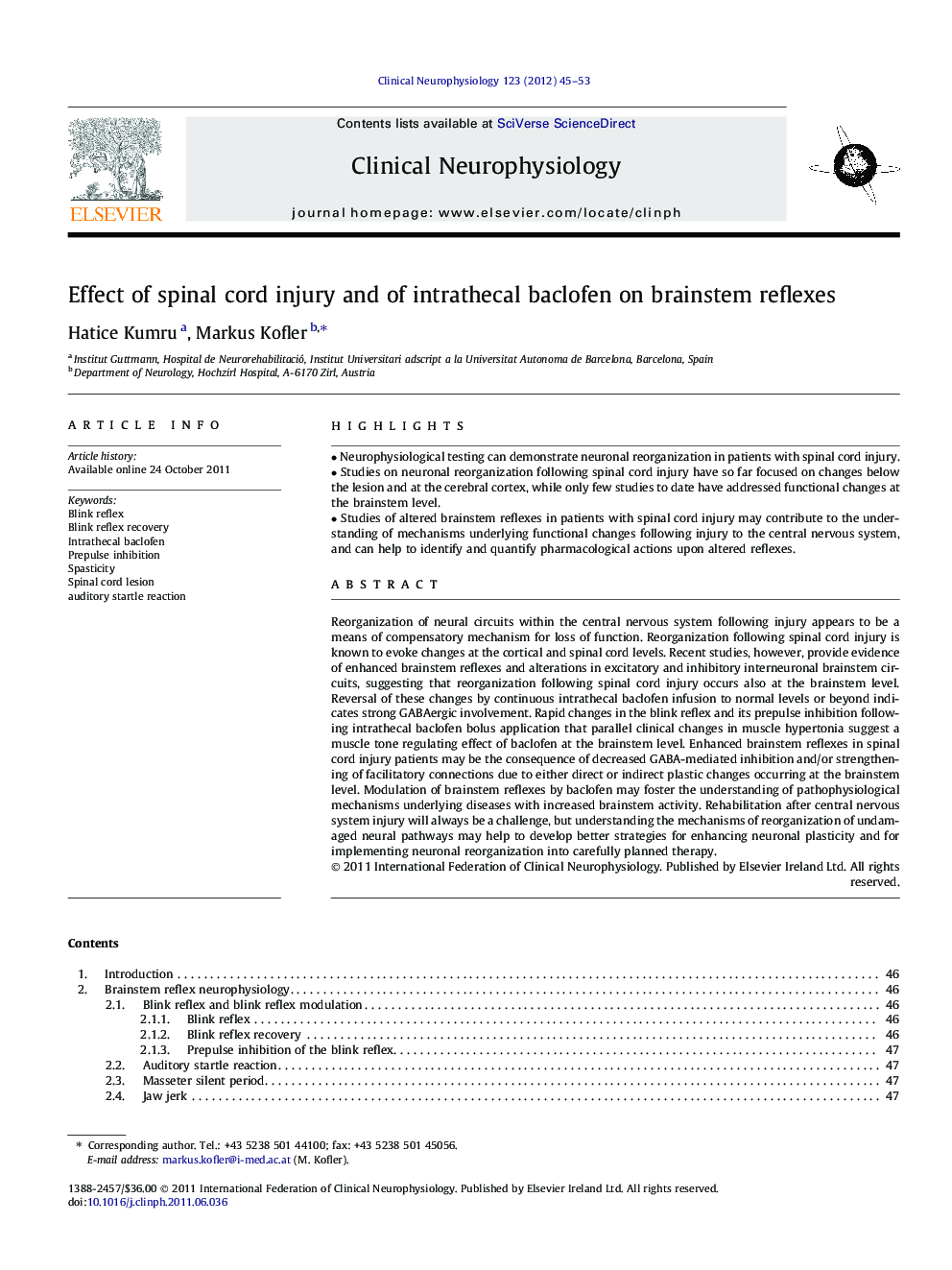| Article ID | Journal | Published Year | Pages | File Type |
|---|---|---|---|---|
| 3043828 | Clinical Neurophysiology | 2012 | 9 Pages |
Reorganization of neural circuits within the central nervous system following injury appears to be a means of compensatory mechanism for loss of function. Reorganization following spinal cord injury is known to evoke changes at the cortical and spinal cord levels. Recent studies, however, provide evidence of enhanced brainstem reflexes and alterations in excitatory and inhibitory interneuronal brainstem circuits, suggesting that reorganization following spinal cord injury occurs also at the brainstem level. Reversal of these changes by continuous intrathecal baclofen infusion to normal levels or beyond indicates strong GABAergic involvement. Rapid changes in the blink reflex and its prepulse inhibition following intrathecal baclofen bolus application that parallel clinical changes in muscle hypertonia suggest a muscle tone regulating effect of baclofen at the brainstem level. Enhanced brainstem reflexes in spinal cord injury patients may be the consequence of decreased GABA-mediated inhibition and/or strengthening of facilitatory connections due to either direct or indirect plastic changes occurring at the brainstem level. Modulation of brainstem reflexes by baclofen may foster the understanding of pathophysiological mechanisms underlying diseases with increased brainstem activity. Rehabilitation after central nervous system injury will always be a challenge, but understanding the mechanisms of reorganization of undamaged neural pathways may help to develop better strategies for enhancing neuronal plasticity and for implementing neuronal reorganization into carefully planned therapy.
► Neurophysiological testing can demonstrate neuronal reorganization in patients with spinal cord injury. ► Studies on neuronal reorganization following spinal cord injury have so far focused on changes below the lesion and at the cerebral cortex, while only few studies to date have addressed functional changes at the brainstem level. ► Studies of altered brainstem reflexes in patients with spinal cord injury may contribute to the understanding of mechanisms underlying functional changes following injury to the central nervous system, and can help to identify and quantify pharmacological actions upon altered reflexes.
